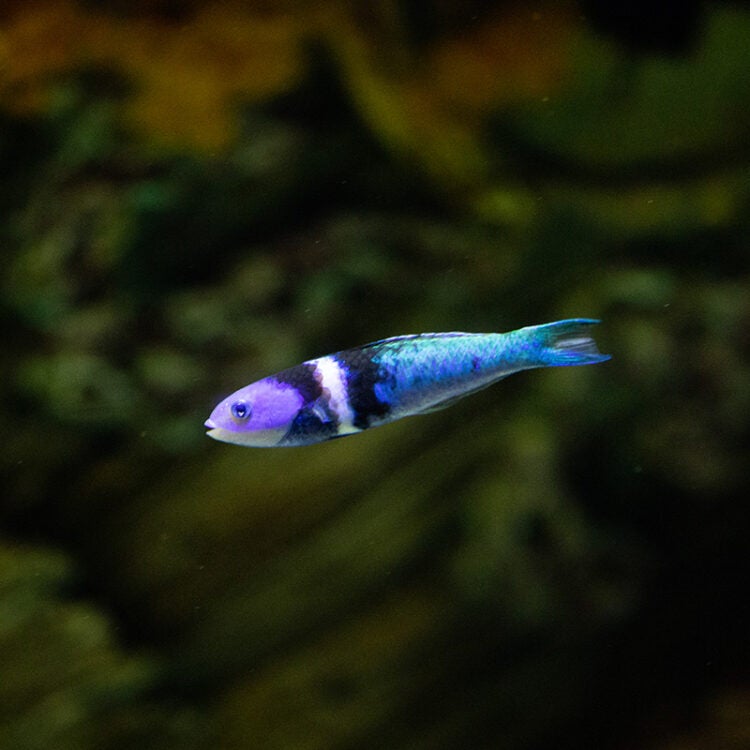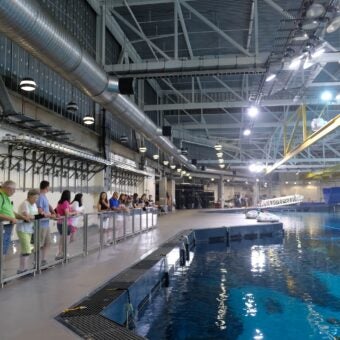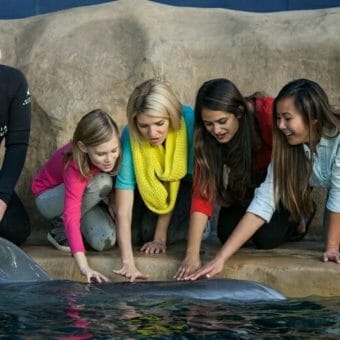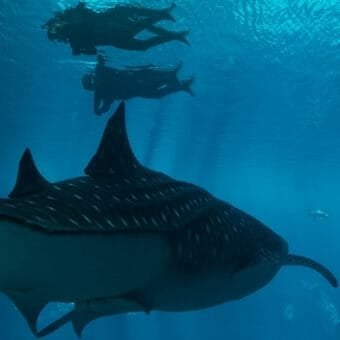-
Size
Up to 9.8 inches (25 cm) -
Diet
Zooplankton -
Range
Western Atlantic -
Habitat
Coral reefs, rocky flats, sandy bottoms
Physical Characteristics
- Maximum length of 9.8 inches (25 cm).
- The body is elongated and slightly laterally compressed.
- Coloration is highly varied and is dependent on the life phase.
- Juveniles have a black mid-lateral horizontal stripe. Coloration below the stripe is white in both inshore and offshore populations. Body coloration above the stripe is yellow in coral reef populations and white in non-reef-associated species.
- The horizontal stripe on females and small males are broken into irregular blotches. Body coloration can change between two variations; a yellow head and upper body with a white underside, two square-like spots behind the eye and no mid-lateral stripe, or a yellowish to greenish-blue upper body, a white underside and white bars that break up the mid-lateral line into blotches.
- Supermale body coloration is green to blue-green. Two black bars surround a white stripe that separates a blue scaleless head from the rest of the body coloration. The caudal fin has black lobes and the pectoral fins are edged in black.
Animal Fact
Juvenile bluehead wrasse will seek shelter among the tentacles of sea anemones, deliberately avoiding direct contact.
Diet / Feeding
- Diet consists of zooplankton, small benthic organisms, eggs of small fish species (saddle blenny, beaugregory damselfish and sergeant majors) as well as ectoparasites and dead tissue from fish at cleaning stations.
Range / Habitat
- Occurs in the western Atlantic from Florida and Bermuda to the southeastern Gulf of Mexico, throughout the Caribbean Sea and to northern South America.
- Inhabits coral reefs, rocky flats, sandy bottoms, inshore bays and seagrass beds.
- Most abundant on shallow reefs at depths over 100 feet (30.5 m).
Reproduction & Growth
- Sexual maturity is reached at a length as small as 1.5 inches (3.8 cm).
- Life stages are divided into juvenile phase, initial phase and terminal phase.
- Spawning occurs at midday throughout the year.
- Exhibits a dash and release style of spawning.
- During midday, large numbers of females and small males dash toward the surface of the water, releasing sperm and eggs at the height of the dash.
- Larger members of this species spawn in pairs of a single male and a single female.
- The dominant male will form a harem and spawn with a single female at a time. Males will court females by exhibiting a dashing behavior, similar to that of group spawning behavior. If the female is receptive, she will join the male in the dash toward the surface to release her eggs. Dominant males may spawn with up to 100 females a day, though 30-50 is more common.
- Eggs are pelagic and float along in the water column for 6-8 weeks until the fry burrow into the sand and transition to the juvenile stage.
- Juveniles collect in groups over seagrass and coral reefs as they mature into the initial phase of life.
Conservation Status
- “Least Concern” on the IUCN Red List.
Additional Information
- Coloration and hardiness make this species a popular fish in the aquarium trade.
- Bold and will often approach divers and snorkelers.
- Juveniles will seek shelter among the tentacles of sea anemones, deliberately avoiding direct contact. If stung, the juvenile will be ingested by the anemone.
- This species will sometimes display sex reversal when the dominant male is absent from a population of females.






